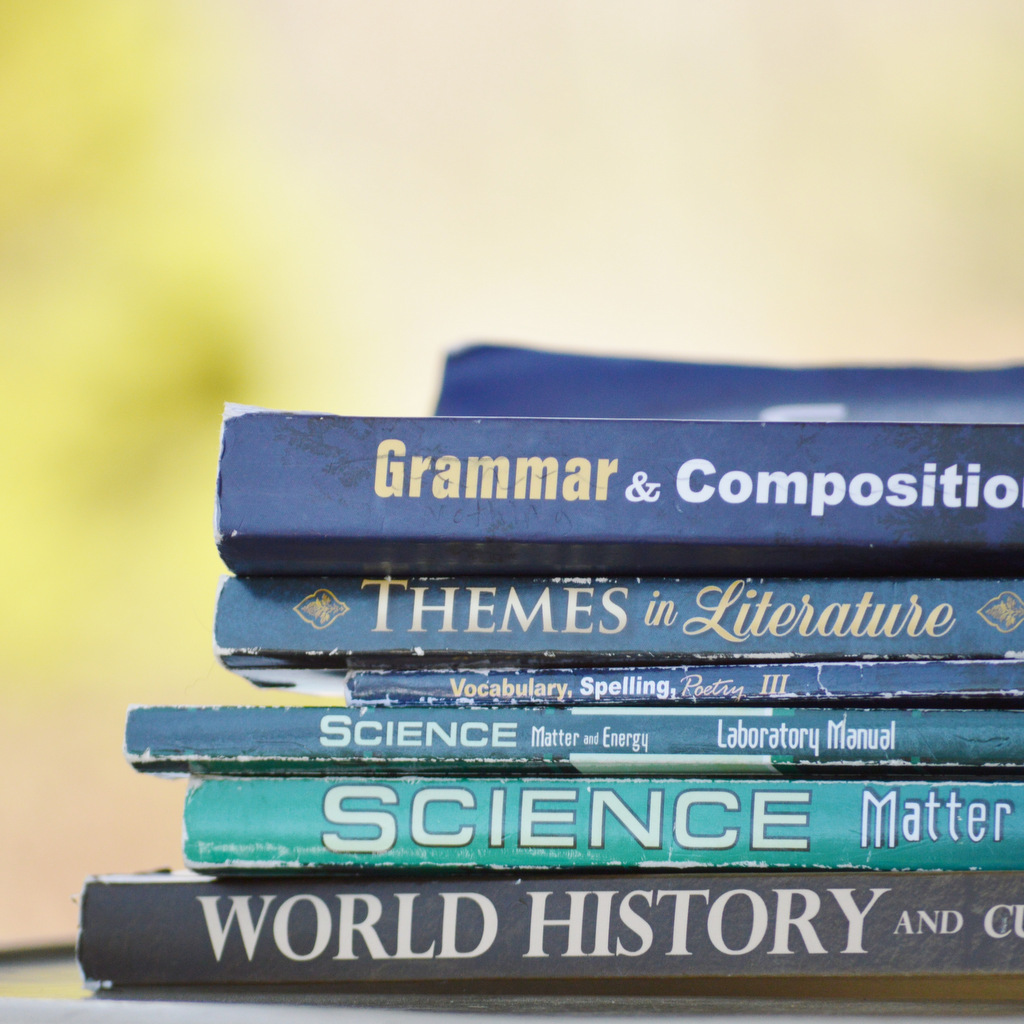How to Improve Your Academic Writing and Citation Styles in 10 Steps
Improving Academic Writing and Citation Skills: A Comprehensive Guide
Academic writing is a cornerstone of scholarly communication, essential for conveying complex ideas, research findings, and critical analyses to a broader audience. Mastering the art of academic writing not only enhances your educational journey but also contributes to the advancement of your field. In this guide, we will explore ten key strategies to elevate your academic writing and citation skills, providing insights tailored to tertiary students and advanced learners.
Below are 10 useful steps to keep in mind when preparing for your writing and citation paper.
#1 Understand the Foundations of Academic Writing
When delving into advanced techniques, ensure you grasp the fundamental principles of academic writing. This includes clarity, precision, and an organised structure. Familiarise yourself with the conventions of grammar, punctuation, and syntax. Read renowned academic papers to internalise the tone and style expected in scholarly writing.
Before embarking on the advanced techniques of academic writing, it is imperative to establish a solid grasp of its foundational principles. These principles encompass a trifecta of key elements: clarity, precision, and a meticulously organised structure.

In your pursuit of mastering academic writing, it’s crucial to become intimately acquainted with the conventions of grammar, punctuation, and syntax. An effective way to immerse yourself in the nuances of scholarly expression is to immerse yourself in the works of esteemed academics. By delving into renowned academic papers, you can not only absorb the tone and style expected in scholarly writing but also glean insights into the art of constructing persuasive arguments within an academic context.
#2 Craft a Compelling Thesis Statement
A robust thesis statement anchors your paper, setting the direction and scope of your argument. It should be concise, specific, and engaging. By refining your thesis statement, you provide readers with a clear roadmap of your paper’s intentions.
Within the framework of academic writing, the thesis statement emerges as an intellectual cornerstone. It functions as a magnetic force, drawing readers into the orbit of your paper by succinctly and powerfully outlining the direction and scope of your argument.
A compelling thesis statement, meticulously honed, is characterised by its concise nature, its specificity in articulating the paper’s objectives, and its inherent ability to captivate the reader’s attention. The process of refining your thesis statement not only sharpens the focus of your paper but also bestows upon your readers a lucid roadmap that guides them through the labyrinthine landscape of your research intentions.
#3 Develop a Cohesive Argument
Your academic writing should unfold logically, with each paragraph seamlessly connecting to the next. Use topic sentences to introduce the main idea of each paragraph and provide supporting evidence to bolster your arguments. This ensures that your work flows coherently and facilitates understanding.
In the realm of academic writing, the thread that weaves through the fabric of your work is the cohesive argument. A seamless unfolding of ideas that is vital to engage your readers and hold their attention. This entails a symphony of logical transitions, each paragraph harmonising with the next to create a symmetrical whole.
The integration of topic sentences takes on the role of a conductor, introducing the main theme of each paragraph with clarity and precision. Supporting evidence is the orchestra that bolsters the symphony, fortifying your arguments and guiding readers through the trajectory of your discourse. Such structural harmony ensures that your work flows fluidly, enabling readers to navigate your thoughts with ease while fostering a deeper understanding of your scholarly contributions.
#4 Incorporate Critical Analysis
Distinguish your academic writing by demonstrating critical thinking. Engage with existing literature, identify gaps in knowledge, and offer fresh insights. Support your analysis with data, research, or expert opinions to strengthen your claims.
Elevating your academic writing to a superior echelon demands a demonstration of critical thinking that is both distinctive and profound. To achieve this, you must engage in a dynamic dance with the existing body of literature, adeptly identifying gaps in knowledge and offering fresh perspectives that contribute to the academic conversation.

Integral to this dance is the supporting partner of empirical evidence—data, research, and expert opinions that validate and amplify your analysis. The interplay between your critical insights and these validating elements not only lends weight to your claims but also transforms your work into a unique intellectual contribution within the academic arena.
#5 Master the Art of Conciseness
In academic writing, precision is paramount. Avoid verbosity by eliminating redundant words and phrases. Aim for clarity and economy of expression, delivering your message in a concise yet comprehensive manner.
In the realm of academia, the economy of words reigns supreme. Precision becomes the lodestar, guiding your quest to communicate complex ideas with brevity and clarity. In the pursuit of this economy, the discerning writer is tasked with extricating redundancy—pruning away superfluous words and phrases that cloak the essence of your message. The beacon guiding your journey is the pursuit of clarity. It is through this clarity that you achieve an elegant fusion of expression and substance, a balance that delivers your message with crystalline precision while maintaining the richness of scholarly insight.
#6 Skilfully Integrate Quotations and Paraphrasing
Effective integration of external sources elevates your writing. Learn the nuances of proper quotation and paraphrasing to avoid plagiarism. Ensure that your voice remains dominant while using quotes and paraphrased content to enrich your arguments.
The art of weaving external sources into your narrative heralds a mastery of academic writing. Quotations and paraphrasing serve as the warp and weft, interwoven with your original thoughts to create a tapestry of enriched discourse.

The subtlety lies in your ability to maintain your voice as the dominant thread, allowing quotes and paraphrased content to accentuate and fortify your arguments. This delicate dance, when executed skilfully, transforms your work into a symposium of voices—both your own and those of the experts who have paved the way.
#7 Navigate Various Citation Styles
Citation styles, such as APA, MLA, Chicago, and IEEE, serve as guidelines for attributing sources in your work. Familiarise yourself with the specific requirements of your field and adhere to them meticulously. Consistent and accurate citations enhance your credibility and allow readers to explore your sources.
Citation styles serve as the navigational stars in the vast sky of academic writing. They provide a structured roadmap for attributing the work of others within your own. Your journey through this celestial expanse necessitates an intimate acquaintance with the specific requirements of your chosen citation style.
Meticulous adherence to these guidelines not only enhances your credibility but also empowers readers to traverse the scholarly galaxy by exploring the sources you’ve illuminated. Through consistent and accurate citations, you become a beacon of scholarly integrity, guiding fellow academics through the constellation of shared knowledge. More on this further below.
#8 Choose the Right Citation Style
Choosing citation styles often aligns with your academic discipline. For instance, humanities subjects might prefer MLA, while sciences lean toward APA or IEEE. Consult your institution’s guidelines or professors to determine the appropriate style for your paper.
The choice of citation styles is a compass that aligns with the unique landscape of your academic discipline. It’s akin to selecting the right tool for a specific task—a decision that influences both the clarity and presentation of your work. Humanities subjects, like a brush on canvas, may find the strokes of MLA style to be most apt, while the precision of APA or IEEE styles could be the preferred palette for the sciences. To navigate this terrain, consult the guidance of your academic institution or professors. This choice is more than just a stylistic preference; it’s a testament to your adeptness at scholarly navigation.
#9 Use Academic Writing Examples
Let’s examine an academic writing example to consolidate our understanding. In a psychology paper, you might assert, “Behavioural interventions yielded a significant reduction in anxiety levels (Smith et al., 2020).” This succinctly integrates a citation while presenting a research finding.
Consider an academic writing example as a vivid illustration that enriches your discourse. Imagine a psychology paper where you assert, “Behavioural interventions yielded a significant reduction in anxiety levels (Smith et al., 2020).”

This succinct integration not only substantiates your argument with evidence but also demonstrates your fluency in the language of scholarly citation. By embracing such examples, you not only enhance the clarity of your arguments but also empower readers with a concrete demonstration of the concepts you expound.
#10 Polish Your Final Draft
The final draft demands meticulous proofreading. Scrutinise grammar, spelling, punctuation, and formatting. Consider seeking peer reviews or utilising proofreading tools to catch any overlooked errors.
The culminating act of academic writing is akin to crafting a finely sculpted masterpiece. The final draft is the canvas upon which your intellectual brushstrokes have been layered with meticulous care. However, this canvas demands meticulous proofreading—an attentive gaze that scours every nook and cranny for any trace of error. Grammatical glitches, errant spellings, punctuation missteps, and formatting foibles are the shadows that must be cast away.
And yet, this journey need not be a solitary one. Seek the discerning eyes of peers, inviting them to contribute to your symphony of words. Utilise modern tools, like proofreading software, as the metronome that ensures each note is perfectly aligned. In this symphony of scholarly expression, the final draft emerges as a testament to your dedication to precision and excellence.
Key Citation Styles and How to Choose Them
There are several prominent citation styles, each tailored to specific academic disciplines. Here are three major styles and their typical usage:
#1 APA (American Psychological Association):
Widely used in social sciences, psychology, and education.
#2 MLA (Modern Language Association):
Commonly employed in humanities and liberal arts disciplines.
#3 Chicago Style:
Utilised in history, arts, and social sciences for its comprehensive approach.
Select citation styles based on your field’s conventions and preferences. A well-chosen style enhances the presentation and professionalism of your work.
APA (American Psychological Association): Navigating the Social Sciences
The American Psychological Association (APA) citation style stands as an emblem of precision and clarity, particularly revered in the realm of social sciences, psychology, and education. Its structured format resonates with the empirical nature of these disciplines, offering a systematic way to attribute sources while weaving together a coherent narrative. Whether you’re delving into the intricacies of human behaviour or exploring the pedagogical paradigms that shape education, APA emerges as your compass, guiding your citation endeavours with meticulous attention to detail.
MLA (Modern Language Association): A Tapestry of the Humanities
The Modern Language Association (MLA) citation style is the tapestry that enriches the scholarly fabric of humanities and liberal arts disciplines. Renowned for its emphasis on the artistry of language and the exploration of human expression, MLA captures the essence of subjects like literature, philosophy, and cultural studies.
The elegance of its format echoes the elegance of prose, meticulously guiding you through the labyrinth of attributions while allowing your ideas to flourish unhindered. In the realm of creativity and intellectual exploration, MLA is the brush that paints your citations with a flourish.
Chicago Style: Unveiling the Historical and Artistic Tapestry
The Chicago Style citation format unfurls its intricacies in disciplines that delve into history, arts, and the rich tapestry of social sciences. Renowned for its comprehensive approach, it caters to a diverse range of subjects that dissect the past, unravel artistic expressions, and explore the intricacies of societal dynamics.
This style not only provides guidelines for attributing sources but also presents an avenue for expressing complex historical narratives or contextualising artistic creations. As you embark on a journey through the annals of history or examine the brushstrokes of artistic genius, the Chicago Style offers a framework that accommodates the nuanced narratives these disciplines require.
Selecting the Ideal Citation Style: A Tapestry Tailored to Your Discipline
Amidst the variety of citation styles, the art of selection is pivotal—a decision that paints your academic canvas with professionalism and resonance. The choice of citation styles isn’t arbitrary; it’s an acknowledgment of the conventions and preferences inherent to your field. Your scholarly discipline is akin to a unique tapestry, woven with distinctive threads of inquiry and exploration. Each citation style, a thread in this tapestry, weaves itself into the fabric of your work, accentuating its essence.
In this tapestry, your choice of citation styles serves as a vital hue. By aligning with the conventions of your academic discipline, you ensure that your work resonates with the expectations of your peers and mentors. Your citations become seamless companions to your ideas, elevating the scholarly discourse by adhering to a structure that is both familiar and revered. Just as a painter selects brushes and colours for a masterpiece, you, too, select a citation style that aligns with the artistic expression of your academic pursuits.
A well-chosen citation style isn’t merely a logistical aspect of your writing—it’s a testament to your scholarly sophistication. It’s a conscious decision to uphold the standards of your field, to contribute to the collective body of knowledge in a manner that is both informed and respectful. As you gaze upon your work, you’ll find that your chosen citation style is more than a utilitarian tool; it’s an integral part of the narrative you weave—a narrative that reflects the essence of your academic journey.
In essence, the choice of citation styles is an embodiment of your academic identity—a recognition of the conventions that bind your discipline and an affirmation of your commitment to scholarly excellence. Through this conscientious selection, your work becomes more than just a collection of words—it becomes a symphony of ideas, harmoniously resonating with the cadence of your field. So, as you embark on your scholarly voyage, remember that your choice of citation style is more than a mere footnote; it’s a brushstroke that colours the canvas of your intellectual contribution.
Key Takeaways
- Foundational Principles: Master the basics of grammar, structure, and style for effective academic writing.
- Thesis Excellence: Craft a clear and engaging thesis statement to guide your paper.
- Logical Coherence: Develop a seamless argument by connecting paragraphs logically.
- Critical Engagement: Showcase your critical thinking through analysis and insights.
- Concise Expression: Communicate efficiently by eliminating wordiness.
- Source Integration: Quote and paraphrase expertly to enrich your arguments.
- Citation Proficiency: Learn and adhere to the appropriate citation style for your field.
- Choosing the Right Style: Select a citation style aligned with your academic discipline.
- Polished Final Draft: Prioritise proofreading and peer reviews for error-free writing.
In the realm of academia, refined writing and accurate citations are non-negotiable. As you hone your academic writing skills, remember that consistent practice and a commitment to improvement are key. Seamlessly integrating citations, developing compelling arguments, and adhering to citation styles demonstrate your dedication to scholarly excellence. By embracing these strategies, you position yourself as a confident and skilled academic writer.
Useful Resources
- Way With Words: Enhance your research with accurate transcription services.
- Purdue OWL: A comprehensive guide to various citation styles and writing principles.
- Academic Phrasebank: Offers a plethora of academic writing phrases and examples.
Engagement Questions
- How does mastering citation styles contribute to the credibility of your academic work?
- Can you provide an instance where a well-integrated academic writing example enhances the clarity of an argument?
- What strategies do you employ to ensure your academic writing remains concise yet comprehensive?
